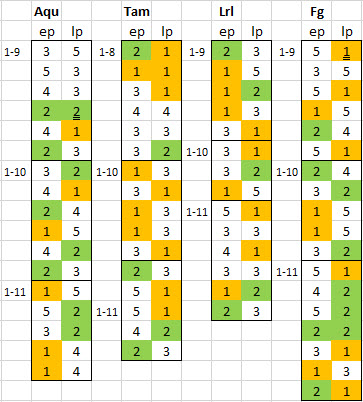Aria to Speed

I’m going to sing an old song in this post. Come on in and hum along with me. You might just pick up on a new note or two that will harmonize profitably with your own way of handicapping . . .
There are (the proverbial) “One hundred and one” different handicapping factors that could potentially be considered when approaching any thoroughbred horse race.
After mixing and assigning various weightings and degrees of pertinence to today’s specific races, the number of possible combinations increase, and a kind of insanity-inducing complexity results.
What to do?
Most modern handicappers logically resort to computer programs to handle all that data. However, that brings in another computer-age axiom: “Garbage in – garbage out.”
Crunching, manipulating, and massaging a boatload of factors doesn’t necessarily produce precise predictions.
For many dedicated computer users – even after the minimum of a couple of years using a quality handicapping software – they still most often only approach break-even results.
This is good – overcoming the track-take is a positive step, but (for other than the biggest of bettors who are in the game for the rebates) break-even is not the bottom-line players are seeking.
In the last couple of decades, most successful ‘computer handicappers’ have leaned towards using “all-inclusive” type software that crunches scores of variables – even up to 70 or 80.
Algorithms that have been derived from testing those various variables against tens of thousands of races are then applied, and final figures – sorted into rankings are spit out.
I don’t argue with the possibilities of attaining long-term profits using that approach – I just think it’s over-kill.
Simplicity and elegance can suffice. Profitable wagering does not require the compounded complexity, and the use of expensive tools.
——————-
Let’s do a super-quick, mini-seminar: “Back-to-basics 101.”
From the scores of handicapping factors that might be important in today’s race – if you had to pick only one – which would hold up as most predictive over say 300 mixed races at a dozen different tracks?
What would you say – which single factor would you pick?
I think one would have to say “speed,” It is, and has always been, the name of the game.
More specifically, the ability to handle the fractional times that will be put up in a specific race today.
The distribution of speed (early-mid-late), otherwise known as Pace, is most often the crucial deciding factor that will settle the “speed” question after they break from the gate.
There are (without refining it down into its finer degrees) primariy three ‘styles’ of distributing speed:
- An early speed type who goes gate-to-wire (or that is never more than a length behind the pace-setter).
. - A pressing type runner who prefers to stay within striking distance, but distributes it total energy more evenly over the course of the race.
. - A late runner who lags back early – begins to pick it up later in the race, and has more energy left to use in the final couple of furlongs.
There are minor variations on the theme, and some races can get ‘wonky’ because of a suicidal early pace, but the winner . . . always either sets, or overcomes the fractional times of the race.
Agreed?
Alright then – skipping all the intermediate courses – let’s move right into, “Advanced Handicapping 501- Elegant Simplicity.”
——————-
Here is a set of generalized assumptions that addresses the above discussion in the simplest way:
- A runner can be fast early and slow late – and still win the race (if its overall speed is enough to compete in today’s race).
. - A runner can be slow early and fast late and still win the race (if its overall speed is enough to compete in today’s race).
. - Only about 20% of race winners show neither early nor late dominance (ranking 1 or 2 in either Early speed/pace or Late speed/pace) against today’s likely fractions.
Below is a table showintg figures for the last three racing days (as I write this) of races wagered at the 4 tracks I was actively following. Maiden and maiden claiming were excluded – as well as several other races because of too few starters, or prohibitive favorites I considered legitimate.
The simplest possible process was used:
- Included for handicapping were only the low 5 (and ties) morning line horses
. - Speed/pace rankings were derived using the best race of the last 3 races for each of those horses – as long as at similar distance and surface.
. - Class was disregarded, as were recency and all other handicapping factors – with one exception: If the horses’ final beaten lengths were terrible (10 lengths or more behind winner) – I chose a race where it finished better, or if all finishes were poor – eliminated and replaced it with the sixth ranked morning line horse.
The table below shows my speed/pace factor rankings for the winners:
There were 65 races in total. In 57 of those races, the winner ranked in top 2 for either early pace, or late pace (or both).
The average win pay was $8.80 ($3.60 lowest, $22.60 highest) – there were 23 winners that paid in double digits.
What has been accomplished with this simplest of handicapping approaches?
The winner was in 87% of those races –
. . . this simply by limiting choices to one of the low 5 morning line horses and then eliminating any remaining runner that wasn’t ranked 1 or 2 in the two crucial “speed” factors of early and late.
I have my own way of arriving at a ranking for “early speed/pace” and “late speed/pace” (a slightly tweaked version of software readouts), but it is not magic. Any decent hand-made, or computer-generated fractionally compounded speed rankings would give approximately the same results.
Now – of course – there were still 2, 3, or 4 horses (most often 2 or 3) in each of those races that qualified using this approach. I wagered on a single horse in 31 of those races and on two horses in the other 34.
How one makes the final betting decision/s will determine the level of profits – but that is a discussion for another day .
————————

